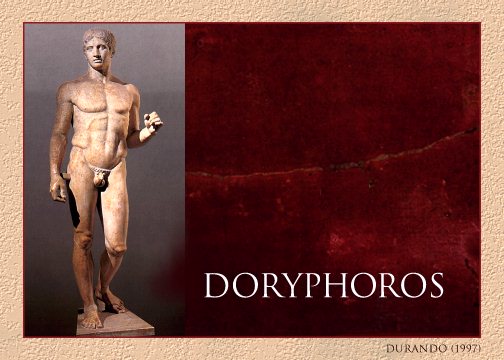

"He also made what artists call the 'Canon' or Model Statue, as they draw their artistic outlines from it as from a sort of standard; and he alone of mankind is deemed by means of one work of art to have created the art itself."
Pliny, Natural History
Toward the end of his thirty-seven volume Natural History, Pliny discusses sculpture, which he regards as an evolutionary process, at each stage a contribution being made by one of five sculptors.
"Polycleitus is deemed to have perfected this science of statuary and to have refined the art of carving sculpture, just as Pheidias is considered to have revealed it. A discovery that was entirely his own is the art of making statues throwing their weight on one leg, although Varro says these figures are of a square build and almost al made on one model."
In attempting to express the ideal figure, Polyclitus sought to establish a canon which would serve as a complex mathematical model for the commensurability of parts (symmetria) of the human body (the heroic male nude), each unit dictating the proper proportion of each. The Doryphoros (Spear Bearer) or Kanon, sculpted c. 440 BC, was said to have exemplified those tenets.
The weight of the body on one foot, the other flexed and at rest, is a stance called the "chiastic" pose.